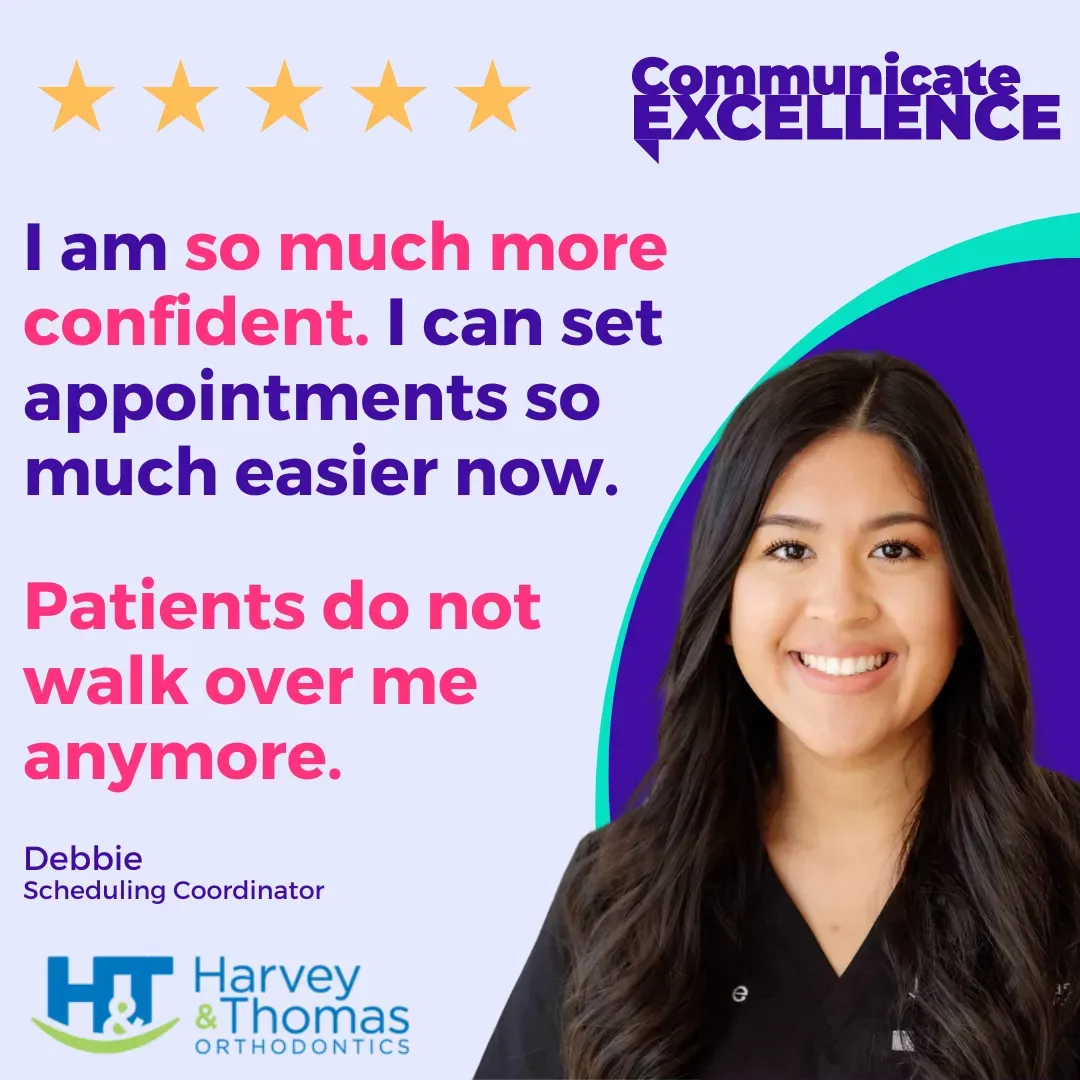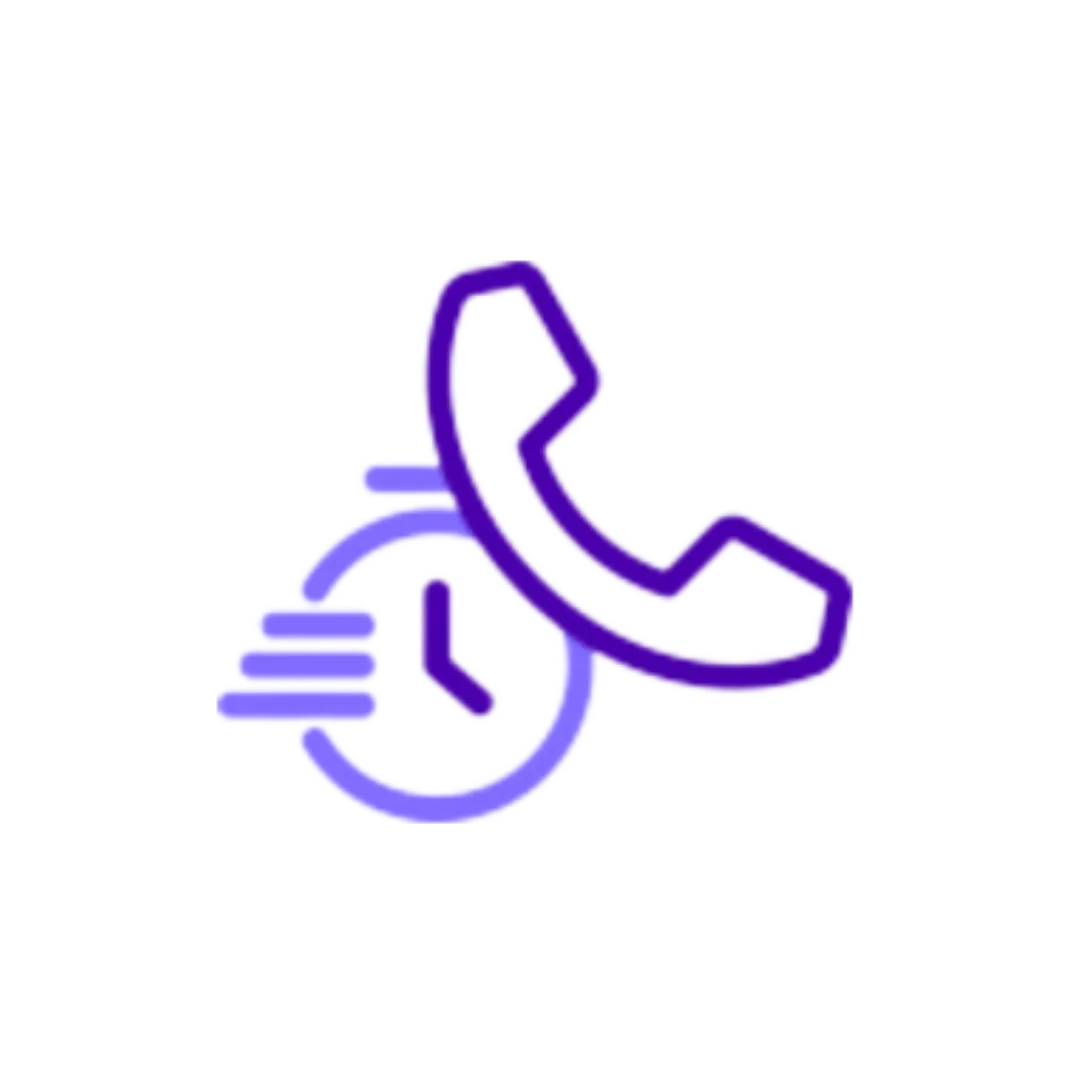See What Our Clients Are Saying!
Our Clients' Experiences






What Our Clients are Saying



Our Clients' Experiences



What Our Clients are Saying











Hear from Amy
The ONLY Communication Training Consultant Specializing In Orthondontic Front-Desk Employees
Saving orthodontists, like you, thousands of dollars in marketing costs every year because your team knows how to win over each patient by looking after them well -
we're here for all your
customer service training and growth needs.
I am Amy & I have worked in EVERY admin role in the practice




Every practice needs an Amy!
Communication etiquette just isn't taught in schools, not even at home anymore - especially since the advent of caller id!
Our team members find themselves in "front of house" roles with little to no formal training. Let's make a change. Let's help our people feel confident and eloquent when handling telephone interactions.
My customer communication training will help you to 10X your patient experience to massively impact your Win ratio!

40%
Decrease in No Shows
because all your customer relationships are real connections, right from the start.

64%
Reduction in Longer, Problem Calls
because you're no longer inadvertently upsetting your valued customers.

20%
Increase in Production
because you've built trust with your customers from the beginning, so your win ratio is much higher.
HOW TO WORK WITH ME

Phone Coaching
Telephone skills training for efficient and impactful first impressions with your receptionist and front office team.

Sales Coaching
Treatment Coordinator communication training for consultations to adapt, read the room, and win the start.

Workshops & Keynotes
Book me for your team or appreciation event you are running to provide customer experience training.
Join my mailing list for regular inspiration, tips and techniques to share with your team.
Watch my short video on the 5 Types of Questions as a welcome gift.
Did you know there are different types of questions? Annoyingly, we often default to the question type that doesn't actually help move us towards our goal.
Take a few moments to watch my short video and you'll learn a few of the different types so you can be more conscious of your speaking habits and bring the correct question type to the situation at hand.
Do share this video with the rest of your team to help them make the same change - it's my little thank you for having you join my mailing list.


The "Big Two" of Communication
We are busy communicating and being communicated with our entire lives. And as you may have noticed, it doesn’t even require verbal communication to get a point across. Think of how babies let us know their needs and how they cue us before even mastering a spoken language. And don’t even get me going on how our pets communicate with us. No words are needed for them to get their point across and gain our compliance and cooperation.
Within our practices we are using many types of communication, including:
• Verbal
• Non-verbal
• Visual
• Written
• Digital
• …and more
The challenge is how to be effective in our communication, ensuring our messages are received as intended. There truly is an art and science to effective communication. There is more to communication than repeating or templating rote scripts. Communication is not only heard but FELT.
Over the last 50 years, there has been a lot of research regarding communication. Communication scientists have proven there are two critical components of effective communication.
The “Big Two” are:
• Warmth, and
• Competence
Let’s take a few moments and dive into each one. (And as an aside, multiple studies have shown that both adults and children form rapid evaluations of Warmth and Competence…as quickly as 100 milliseconds after exposure to a person’s face!)
Warmth
Warmth is evaluated on characteristics such as friendliness, trustworthiness, sincerity, and helpfulness.
Warmth helps the recipient answer the question,
“What are your INTENTIONS toward me?”
It answers, “Friend or foe?” This is such a critical piece of information as it impacts our “survival.” And because of this it is not surprising recent research* (2021) shows Warmth as more influential than Competence.
Warmth helps to build trust and rapport. And when that happens, people are more likely to open up to us and share, leading to greater clarity.
Competence
Competence is evaluated on characteristics such as intelligence, skill, ability, and creativity.
Competence helps the recipient answer the question,
“Are you able to ENACT your intentions?”
It answers, “Can you do it? Do you have the autonomy to do so?”
Competence is the gateway to respect. And when that happens, people assign a higher value to the solutions you can provide.
Bringing them together
All communication becomes more effective when we BALANCE both Warmth and Competence. An overemphasis on Warmth could mean while someone may love you, they may not take you seriously. And an overemphasis on Competence could make people think you are sterile, cold, or unapproachable.
When balancing the “Big Two,” we would do well to LEAD with Warmth and then SUPPORT with Competence. This aligns with a famous quotation attributed to Teddy Roosevelt and popularized by John Maxwell. It says,
“Nobody cares how much you know until they know how much you care.”
When you balance Warmth and Competence, the result is CHARISMA.
Charisma
A dictionary definition of charisma is “compelling attractiveness or charm that can inspire devotion in others.” Wow – isn’t that what we strive for? Doesn’t that make it easy for patients to say YES to us and invoke compliance with treatment? It is sure a great start.
So, how do we demonstrate this? How do we make this practical?
Here are a few small, repeatable habits you can begin using or polishing up.
Demonstrate Warmth:
• Smile authentically when greeting someone in the office or on the phone.
• Add a polite welcome such as, “Glad to help” or, “Good to see you.”
• Actively listen to their replies.
• Finish with a polite closure such as, “Have a great day!”
Demonstrate Competence:
• Provide recommendations without ambiguous words (avoiding “kind of,” “sort of,” “around,” etc.)
• Use statement inflections when providing options while avoiding a final devaluing, “OK?”
• Build and use talking points when explaining information to avoid “rabbit trail” rambling.
Success for everyone
We improve communication by balancing the “Big Two” of Warmth and Competence. This results in more effective communication, which leads to success for everyone. Patients trust us, value us, and have higher compliance with our recommendations. And the trickle-down effect is smoother transactions, more referrals, and more starts for our practice.
Success is when patients and parents think two things about our interactions with them:
• “They get me!” (Warmth)
• “They get it!” (Competence)
They TRUST us!
*Li, M., Mai, Z., Wang, S. et al. Warmth is more influential than competence: an fMRI repetition suppression study. Brain Imaging and Behavior 15, 266–275 (2021).
Our Clients' Experiences









